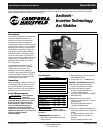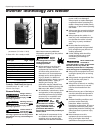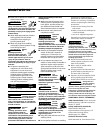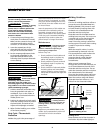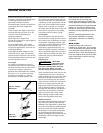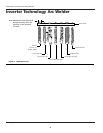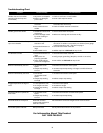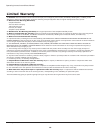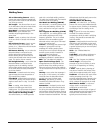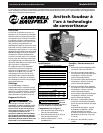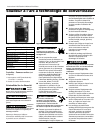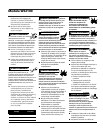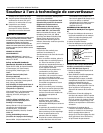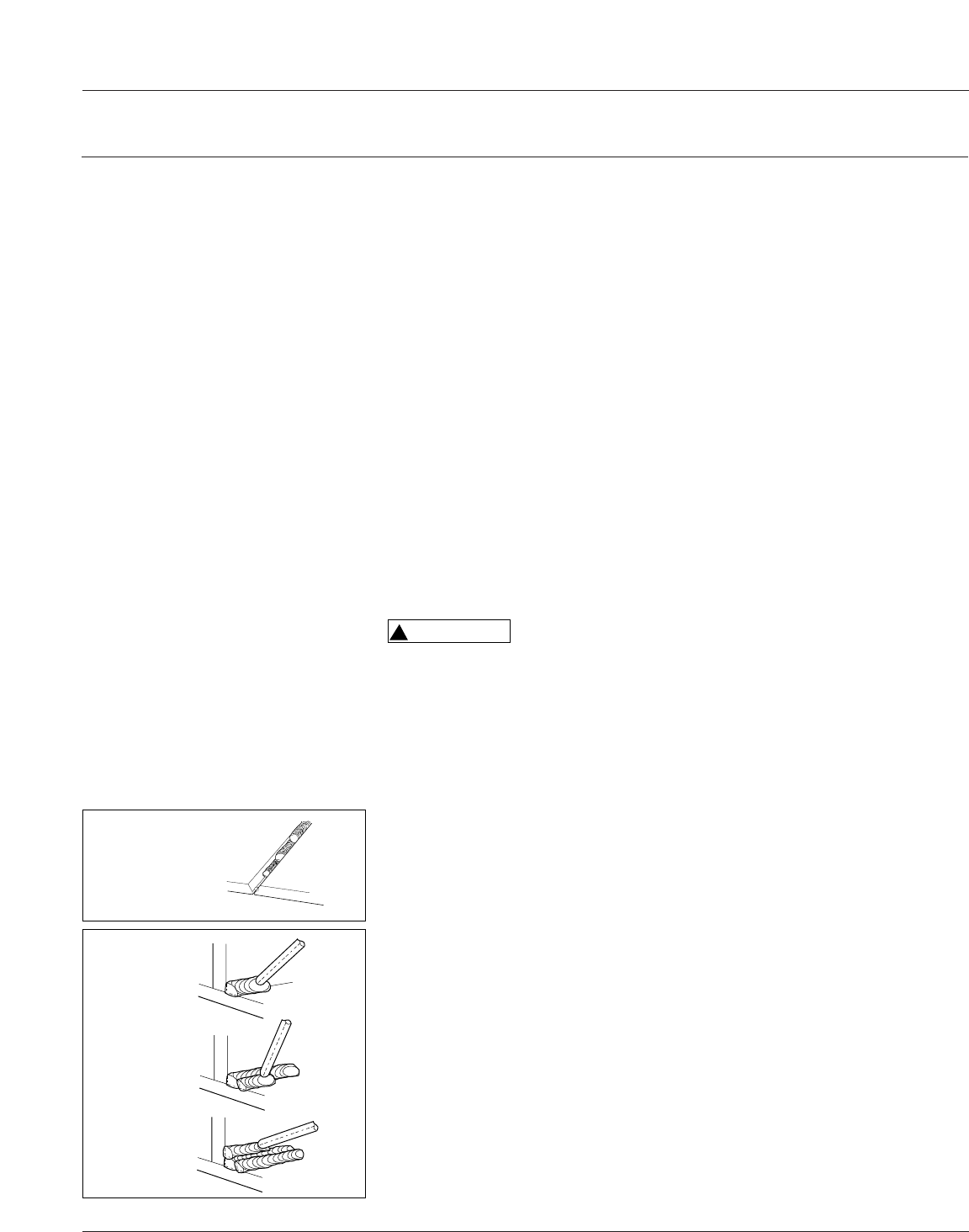
positions and weld joints become
necessary, electrode angle becomes an
increasingly important factor in
obtaining a satisfactory weld.
Electrode angle involves two positions -
travel angle and work angle. (See
Figure 8.)
Travel angle is the angle in the line of
welding and may vary from 5º to 45º
from the vertical, depending on
welding conditions.
Work angle is the angle from
horizontal, measured at right angles to
the line of welding.
For most applications, a 45º travel
angle and 45º work angle is sufficient.
For specific applications, consult an arc
welding handbook.
Note: Right handed welders should
weld from left to right. Left handed
welders should weld from right to left.
The electrode should always point into
the weld puddle as shown.
Arc Length
Arc length is the distance from the
work piece to the tip of the electrode,
the distance which the arc must travel.
A proper arc length is essential to
generate the heat needed for welding
(See Fig. 11). An arc that is too long
produces an unstable arc, reduces
penetration, increases spatter, and
7
www.chpower.com
Model WS2100
causes flat and wide beads. Too short
an arc does not create enough heat to
melt the work piece, the electrode has
a tendency to stick, penetration will be
poor, and uneven beads with irregular
ripples result. A proper arc should be
no longer then the diameter of the rod.
The sound of a proper arc is a steady,
crisp sizzle, similar to bacon frying.
Travel Speed
The travel speed is the rate at which
the electrode is moved across the weld
area. Factors such as diameter and type
of electrode, amperage, position, and
work piece material thickness all effect
the speed of travel necessary for
completing a good weld (See Fig. 11).
When the speed is too fast, the bead is
narrow and bead ripples are pointed as
shown. When the speed is to slow, the
weld metal piles up and the bead is
high and wide.
Slag Removal
Wear ANSI
approved safety
glasses (ANSI Standard Z87.1) and
protective clothing when removing
slag. Hot, flying debris can cause
personal injury to anyone in the area.
After completing the weld, wait for the
welded sections to cool. A protective
coating called slag now covers the weld
bead which prevents contaminants in
the air from reacting with the molten
metal. Once the weld cools to the point
that it is no longer glowing red, the
slag can be removed. Removal is done
with a chipping hammer. Lightly tap
the slag with the hammer and break it
loose from the weld bead. The final
clean-up is done with a wire brush.
When making multiple weld passes,
remove the slag before each pass.
Welding Positions
Four basic welding positions can be used;
flat, horizontal, vertical, and overhead.
Welding in the flat position is easier than
any of the others because welding speed
can be increased, the molten metal has
less tendency to run, better penetration
can be achieved, and the work is less
fatiguing. Welding is performed with the
electrode at a 45º travel angle and 45º
work angle.
!
WARNING
Other positions require different
techniques such as a weaving pass,
circular pass, and jogging. A higher skill
level is required to complete these welds.
Overhead welding is the least desirable
position as it is the most difficult and
dangerous. Heat setting and electrode
selection will vary depending upon the
position.
All work should be performed in the
flat position if possible. For specific
applications, consult an arc welding
handbook.
WELD PASSES
Sometimes more then one pass is
necessary to fill the joint. The root pass
is first, followed by filler passes and the
cover pass (See Figures 9 and 10). If the
pieces are thick, it may be necessary to
bevel the edges that are joined at a 60º
angle. Remember to remove the slag
before each pass.
Figure 9 - Multiple
Weld Passes
Figure 10 -
Fillet Welds



